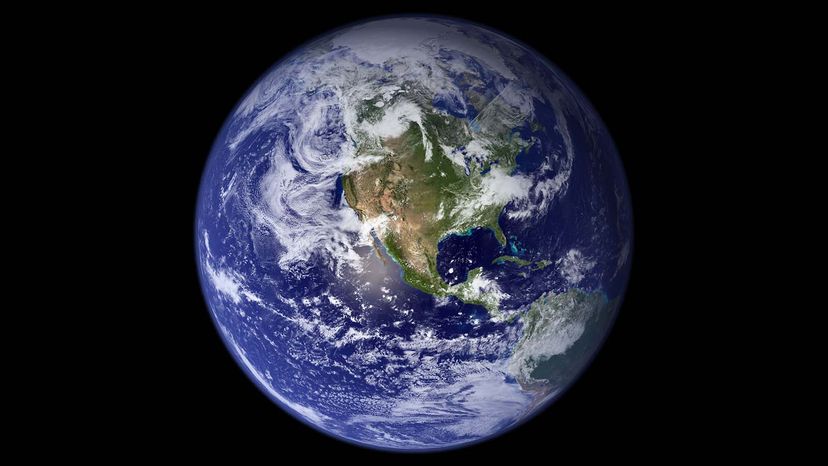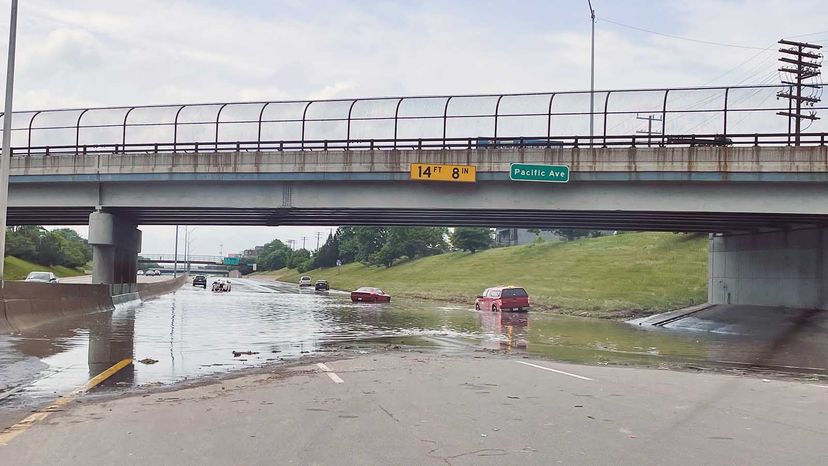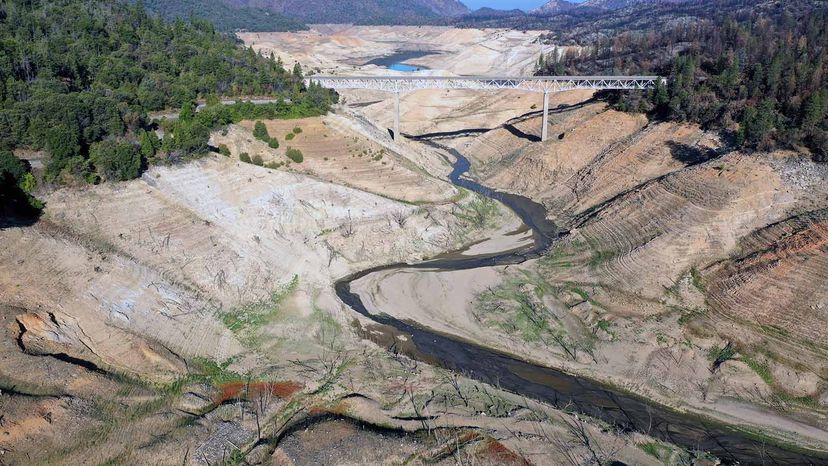Depending on where you live in the world right now, you might be experiencing heavy rains or extreme drought. The current extreme fluctuation in precipitation across the globe is due in large part to climate change.
However, the cycle that controls the rain — or lack of rain — is the hydrological cycle, also known as the water cycle. This is the cycle responsible for the continuous movement of water through its states of liquid, solids and vapor, from the sky to the Earth’s surface and even underground.
So if water is moving through a continuous and well-regulated cycle, then why do we still see extreme weather events involving either too much or not enough water, and how does climate change interact with the water cycle?
What is the water cycle?
As mentioned, the water cycle is how all of Earth’s water moves through its various states of liquid, solid and gas. It’s driven by the sun, and because it is a continuous phase, there is no starting or ending point, but for the sake of this article, we will begin at the liquid state.
The sun heats bodies of water, such as oceans and lakes (liquid), which evaporates some of the water and turns it into vapor in the air. Along with bodies of water, vapor (gas) also comes from the water that plants transpire and is then evaporated. This is also known as evapotranspiration.
Vapor also comes from ice and snow (solid), which can sublimate, meaning it can transform from a solid state directly into vapor. Rising air currents then take all this vapor up into the atmosphere, where it condenses into clouds in the cooler air.
As these clouds are moved around the Earth by air currents, they collide and grow, and some eventually fall out of the sky as precipitation, for example as rain or snow. Water that falls as rain either falls directly into bodies of water or hits the ground and flows as surface runoff into bodies of water. Some of the water also soaks into the ground and replenishes aquifers, which store fresh water that humans can access for drinking among other things.
Precipitation that falls as snow either immediately melts, is stored as snowpack that melts in the spring, or in especially cold climates, can stick around as glaciers and ice caps. This water can be stored for millennia.
Any water that falls to Earth — either as a liquid or solid — will eventually, whether immediately or centuries later, get reabsorbed into the atmosphere, continuing the water cycle process in perpetuity.

Where is most of the Earth’s water?
The vast majority of Earth’s water – 96.5 percent – is salt water found in the oceans, plus a small percentage, 0.9 percent, of salt water found elsewhere. The remaining 2.5 percent is fresh water. However, the majority of that fresh water — 68.7 percent — is frozen in glaciers and ice caps. Another 30 percent of fresh water is underground, and just 1.2 percent is surface or another kind of fresh water, according to the U.S. Geological Survey.
Of that 1.2 percent, 69 percent of fresh water is locked up in ground ice and permafrost, and the remaining 31 percent is what makes up lakes, rivers and swamps. What all these percentages mean is that a minuscule amount (0.007 percent!) of all water on Earth is readily available fresh water that we can use for drinking, cleaning and irrigating. These numbers, of course, fluctuate over the long term — as in millennia — as water moves through the cycle.

How is the climate crisis impacting the water cycle?
So back to the question why are some places experiencing too much rain or too little rain? Kevin Trenberth says it’s because the temperature determines how much moisture the air can hold. Trenberth is a distinguished senior scientist at the National Center of Atmospheric Research in Boulder, Colorado, and an honorary academic in the department of physics, Auckland University in Auckland, New Zealand. In 2021 alone, temperatures have soared and are only expected to continue, according to a study published in Nature July 26.
Let’s break it down: The atmosphere can hold 7 percent more moisture per 1.8 degrees Fahrenheit (1 degree Celsius) of warming, meaning that rising temperatures have a direct impact on the water cycle, or how much water evaporates and how much is returned to the Earth and in what form.
So because the atmosphere can hold more water thanks to hotter temperatures, storms have more moisture, therefore they produce more intense precipitation events. Warmer ocean surface temperatures, which we are also now seeing, feed moisture into storms, as well, and add more extreme amounts of rainfall. This all means these storms naturally increase the risk of major flooding.
On the other hand, warming air temperatures cause increased evaporation. That further dries the surface of the Earth and, increasingly, intensities the duration of droughts. In addition, a heated atmosphere sucks more moisture out of soil, trees and plants. This can cause them to dry out and wilt and lead to increased wildfire risk. When rain does come, much of the water runs off because the ground is so hard. So the soil remains dry and water continues to evaporate, causing more risk of drought.
Even in cold climes, if it gets too dry in the atmosphere, it won’t snow, which is one of the major sources of fresh water.
“Since about 2000, the warnings have been present to expect more extremes at both ends of the water cycle” says Trenberth, whose forthcoming book “The Changing Flow of Energy Through the Climate System,” looks at this issue.
“Heavier rains increase the risk of flooding and where it is not raining, things dry out quicker and increase the intensity of drought and risk of heat waves and wildfire. So water management is extremely important: saving water from when there is an excess for the times when there is a deficit.”
By water management, Trenberth is referring to dams, reservoirs and retention ponds. He also mentions the importance of irrigation but takes care to note that this cannot come at the expense of depleting aquifers.
“Finding out how to replenish the deep aquifers at times of excess is vital,” he says. In order to do this, water conservation is key. “It relates to letting water sit and seep into the soils and crevices, and not rushing it all off into canals and sending it out to sea.”

The water levels at Lake Mead and Lake Powell, two of the largest reservoirs in the United States, are at their lowest levels in history. Both dams are part of the Colorado River damming system that provides water to more than 40 million people.





















COMMENTS